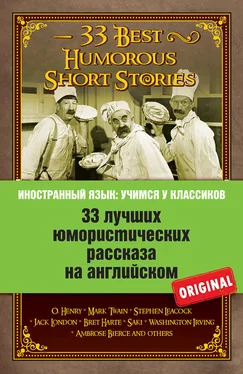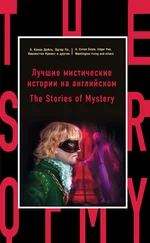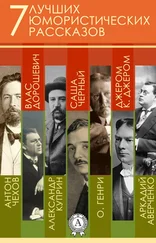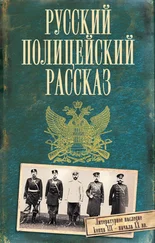‘But how,’ I exclaimed, ‘how in the name of all that is incomprehensible, are you able to aver that the criminal wore rubbers?’
My friend smiled quietly.
‘You observe,’ he said, ‘that patch of fresh mud about ten feet square in front of the door of the house. If you would look, you will see that it has been freshly walked over by a man with rubbers on.’
I looked. The marks of the rubbers were there plain enough – at least a dozen of them.
‘What a fool I was!’ I exclaimed. ‘But at least tell me how you were able to know the length of the criminal’s foot?’
My friend smiled again, his same inscrutable smile.
‘By measuring the print of the rubber,’ he answered quietly, ‘and then subtracting from it the thickness of the material multiplied by two.’
‘Multiplied by two!’ I exclaimed. ‘Why by two?’
‘For the toe and the heel.’
‘Idiot that I am,’ I cried, ‘it all seems so plain when you explain it.’
In other words, the Poor Nut makes an admirable narrator. However much fogged the reader may get, he has at least the comfort of knowing that the Nut is far more fogged than he is. Indeed, the Nut may be said, in a way, to personify the ideal reader, that is to say the stupidest – the reader who is most completely bamboozled with the mystery, and yet intensely interested.
Such a reader has the support of knowing that the police are entirely ‘baffled’ – that’s always the word for them; that the public are ‘mystified’; that the authorities are ‘alarmed’; the newspapers ‘in the dark’; and the Poor Nut, altogether up a tree. On those terms, the reader can enjoy his own ignorance to the full.
Before the Great Detective gets to work, or rather while he is getting to work, the next thing is to give him character, individuality. It’s no use to say that he ‘doesn’t in the least look like a detective.’ Of course not. No detective ever does. But the point is not what he doesn’t look like, but what he does look like?
Well, for one thing, though its pretty stale, he can be made extremely thin, in fact, ‘cadaverous.’ Why a cadaverous man can solve a mystery better than a fat man it is hard to say; presumably the thinner a man is, the more acute is his mind. At any rate, the old school of writers preferred to have their detectives lean. This incidentally gave the detective a face ‘like a hawk,’ the writer not realizing that a hawk is one of the stupidest of animals. A detective with a face like an orang-outang would beat it all to bits.
Indeed, the Great Detective’s face becomes even more important than his body. Here there is absolute unanimity. His face has to be ‘inscrutable.’ Look at it though you will, you can never read it. Contrast it, for example, with the face of Inspector Higginbottom, of the local police force. Here is a face that can look ‘surprised,’ or ‘relieved,’ or, with great ease, ‘completely baffled.’
But the face of the Great Detective knows of no such changes. No wonder the Poor Nut is completely mystified. From the face of the great man you can’t tell whether the cart in which they are driving jolts him or whether the food at the Inn gives him indigestion.
To the Great Detective’s face there used to be added the old-time expedient of not allowing him either to eat or drink. And when it was added that during this same period of about eight days the sleuth never slept, the reader could realize in what fine shape his brain would be for working out his ‘inexorable chain of logic.’
But nowadays this is changed. The Great Detective not only eats, but he eats well. Often he is presented as a connoisseur in food. Thus:
‘Stop a hit.’ Thus speaks the Great Detective to the Poor Nut and Inspector Higginbottom, whom he is dragging round with him as usual. ‘We have half an hour before the train leaves Paddington. Let us have some dinner. I know an Italian restaurant near here where they serve frogs’ legs à la Marengo better than anywhere else in London.’
A few minutes later we were seated at one of the tables of a dingy little eating place whose sign board with the words ‘Restauranto Italiano’ led me to the deduction that it was an Italian restaurant. I was amazed to observe that my friend was evidently well known in the place, while his order for ‘three glasses of Chianti with two drops of vermicelli in each,’ called for an obsequious bow from the appreciative padrone. I realized that this amazing man knew as much of the finesse of Italian wines as he did of playing the saxophone.
We may go further. In many up-to-date cases the detective not only gets plenty to eat but a liberal allowance of strong drink. One generous British author of today is never tired of handing out to the Great Detective and his friends what he calls a ‘stiff whiskey and soda.’ At all moments of crisis they get one.
For example, when they find the body of Sir Charles Althorpe, late owner of Althorpe Chase, a terrible sight, lying on the floor of the library, what do they do? They reach at once to the sideboard and pour themselves out a ‘stiff whiskey and soda.’ It certainly is a great method.
But in the main we may say that all this stuff about eating and drinking has lost its importance. The Great Detective has to be made exceptional by some other method.
And here is where his music comes in. It transpires – not at once but in the first pause in the story – that this great man not only can solve a crime, but has the most extraordinary aptitude for music, especially for dreamy music of the most difficult kind. As soon as he is left in the Inn room with the Poor Nut, out comes his saxophone and he tunes it up.
‘What were you playing?’ I asked, as my friend at last folded his beloved instrument into its case.
‘Beethoven’s Sonata in Q,’ he answered modestly. ‘Good Heaven!’ I exclaimed.
Up to this point the story, any detective story, has been a howling success. The body has been found; they’re all baffled and full of whiskey and soda, and everything’s fine! But the only trouble is how to go on with it! You can’t! There’s no way to make crime really interesting except at the start; it’s a pity they have to go on, that they can’t just stay baffled and full, and call it a day.
But now begin the mistakes and the literary fallacies that spoil a crime story. At this point in comes the heroine – the heroine! – who has no real place in a murder story but is just a left-over remnant of the love story. In she comes, Margaret Althorpe, wild and all dishevelled. No wonder she’s wild! Who wouldn’t be? And disheveled – oh, yes, the best writers always dishevel them up like that. In she comes, almost fainting! What do they do, Inspector Higginbottom and the Great Detective? They shoot a ‘stiff whiskey and soda’ into her – and hit one themselves at the same time.
* * *
And with that, you see, the story drifts off sideways so as to work up a love-interest in the heroine, who has no business in it at all. Making a heroine used to be an easy thing in earlier books when the reading public was small. The author just imagined the kind of girl that he liked himself and let it go at that. Walter Scott, for example, liked them small – size three – ‘sylph-like’ was the term used; in fact the heroine was just a ‘slip of a girl’ – the slippier the better.
But Margaret Althorpe has to please everybody’at once. So the description of her runs like this:
Margaret Althorpe was neither short nor tall.
That means that she looked pretty tall standing up but when she sat down she was sawed off.
Читать дальше
Конец ознакомительного отрывка
Купить книгу












